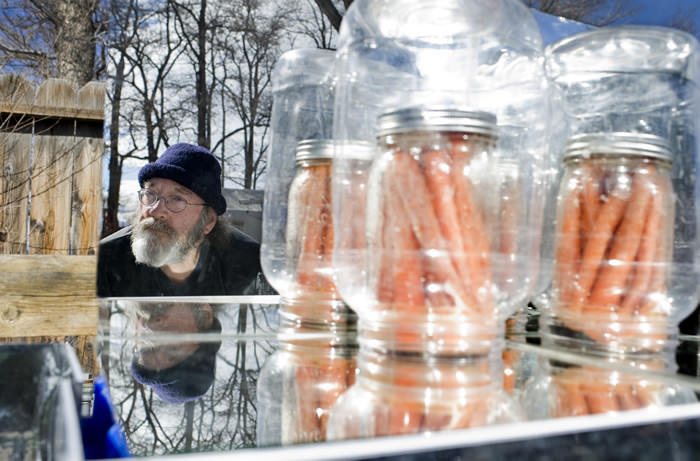tips & tricks
RAY OF SUNSHINE
Build your own solar oven.
WRITTEN BY HEIDI BETHEL
PHOTOS BY CANDICE NYANDO
You know the sun is an ever-present companion on spring and summer days, making your outdoor recreation and gardening possible. But did you also know it’s a great tool for cooking your dinner?
Craig Bergland, a self-appointed solar thermal explorer, of Reno has spent decades harnessing the sun’s tremendous heating power for cooking with his simple solar ovens.
“I’m an enthusiast of solar because of our waste and gross misuse of our resources,” Bergland says. “The sun is free energy, and it’s important to start using this as much as possible, especially here in sunny Nevada.”
For under $20, Bergland makes solar ovens he dubs Ft2 cookers because of the 1-square-foot mirrors included in the design.
“Glass mirrors have the best reflectivity I’ve found and are virtually impervious to the weather,” he says.
He uses the Ft2 to make rice, cooked vegetables, hummus, soymilk, soybeans … the list goes on. The best part? There’s never any worry about burning food or racking up a power bill.
Sound too good to be true? As Bergland’s simple solar oven-building process reveals, it isn’t.
Incandescent construction
First, assemble three 1-square-foot mirrors with one as the base and the other two as the sides, making a corner. According to Bergland, attaching support is key.
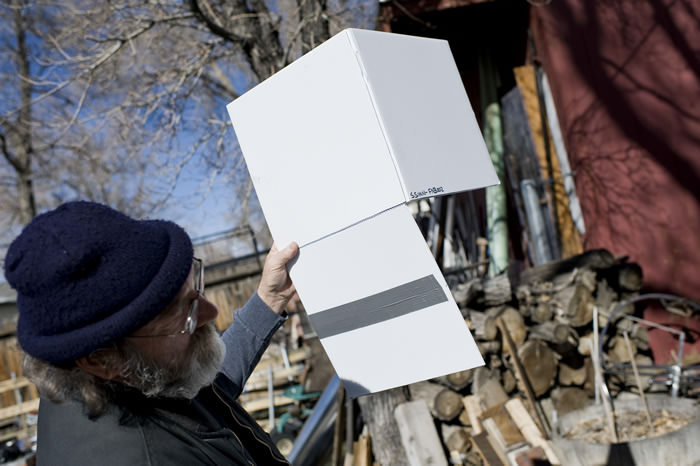
“You must be sure to glue a backing onto the mirrors because they can give you a [serious] wound if broken,” Bergland says. “A good glue or silicon will fasten them securely to a wood frame. Or you can cover the backs completely with duct tape if you prefer a cardboard backing; this will reduce the risk [of hurting yourself] if you break one by holding the glass together. I also use plasticized cardboard with shiny Mylar glued to it. Several layers of glued cardboard provide adequate protection and make the unit a bit lighter and more portable.”

The 90-degree angle of the side mirrors, when positioned facing the sun, gather a tremendous amount of heat, making them an excellent heat source for the cooking vessel, with minimal tracking requirements. The design is nothing but a three-sided corner made with reflective material. To use, simply place the cooking vessel on the bottom pane and let the sunbeams start working! According to Bergland’s calculations, this simple-to-construct cooker puts out about 70 watts — enough to warm the solar oven to about 250 to 350 degrees F.
The cooking vessels Bergland uses range from semi-opaque polyethylene jugs to stacked, wide-mouthed Mason jars. Whatever the vessel he chooses, he then covers it with an outer insulator to trap the heat (think clear Thermos or gallon bucket).
“I’ve cooked on cold, sunny, winter days with the right outer cover,” he says.
To use the solar oven, fill the cooking vessel no more than three-quarters full with the desired food and loosely screw the lid on. Place the outer insulator object over it and set in the sun.
“You can cook most foods in about three hours. If you position it just right, you can set it and forget it,” Bergland says. “Rice and veggies piping hot when you get home from work? Just point the leading edge of the cooker to sunset before you jet off to work, and it should be hot and ready when you get home.”
A big fan of all things renewable energy, Heidi Bethel was enlightened to learn more about the Ft2 cooker and encourages folks to try their hand at cooking under the sun.
Resources
How to Make Ghee
Craig Bergland exhibits how to make ghee in the backyard of his Reno home.
Put a stick of butter into a jar
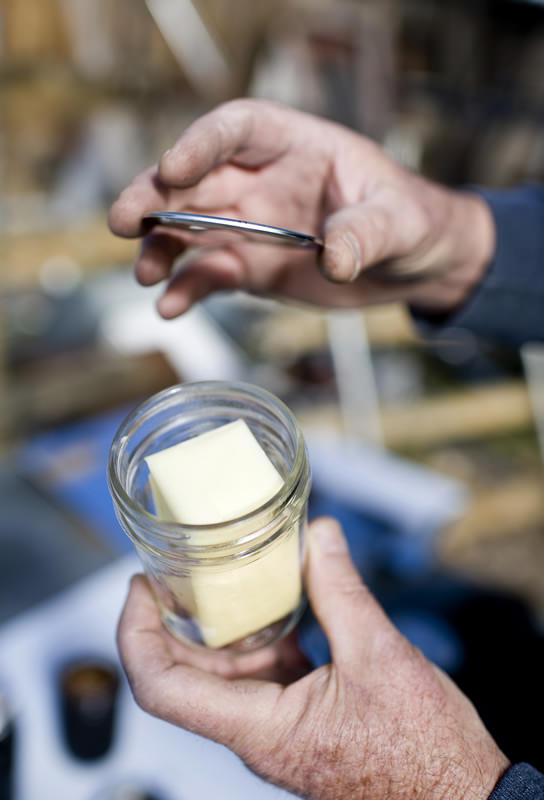
Cover the jar with another painted jar or outer insulator to accelerate the cooking process
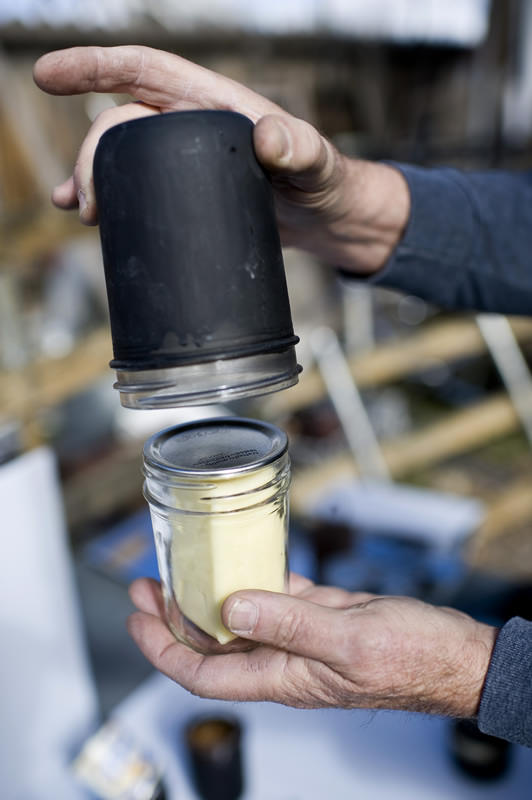
After allowing the butter to cook in the sun, remove the top jar or outer insulator
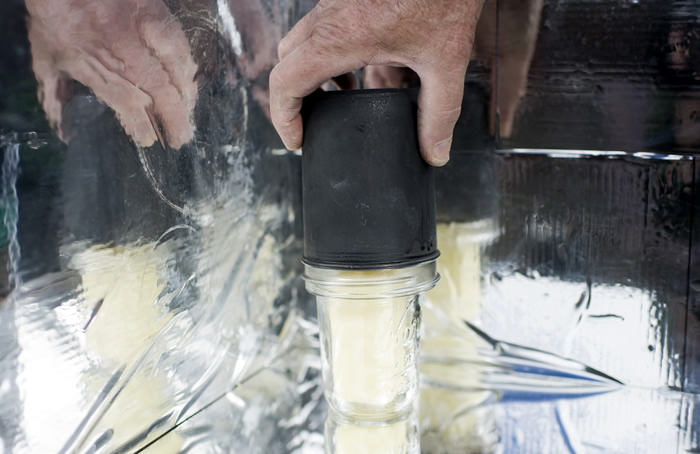
Scrape the water and milk fats from the surface to reveal the ghee
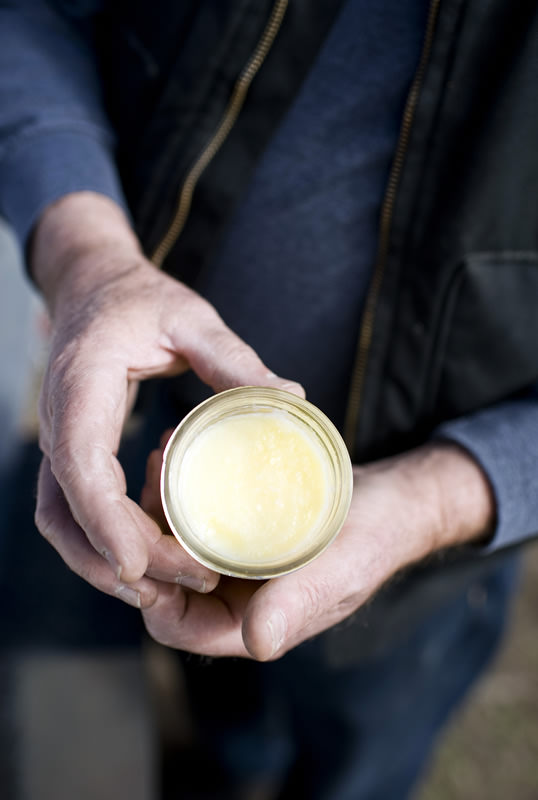
Recipes
Carrots in Butter
(courtesy of Craig Bergland. Serves 6)
1 pound carrots, peeled
2 tablespoons butter
2 teaspoons water or chicken stock
Place all ingredients in Mason jar. Cover with lid (not too snugly) and place in cooker. Cover with outer larger jar or insulating object (such as a large plastic container or bucket). Cook in sun for 2 hours. Tighten lid completely and turn jar upside down. Replace outer cover. Cook about 1 hour more or until tender. Cooking time depends on sunlight conditions.
Solar Soy Milk
(courtesy of Craig Bergland. Serves 6)
¼ to ⅓ cup Laura (or other non-GMO brand) organic soybeans, coarsely ground
Salt, sugar, or honey, to taste
Place all ingredients in Mason jar and fill to ¾ with water. Screw on lid, place in cooker, and cover with outer insulator. Let cook several hours or even all day for richer taste. Do not disturb jar as that can produce foam and become messy. After cooling, gently shake jar, open carefully, and enjoy rich soy milk.
